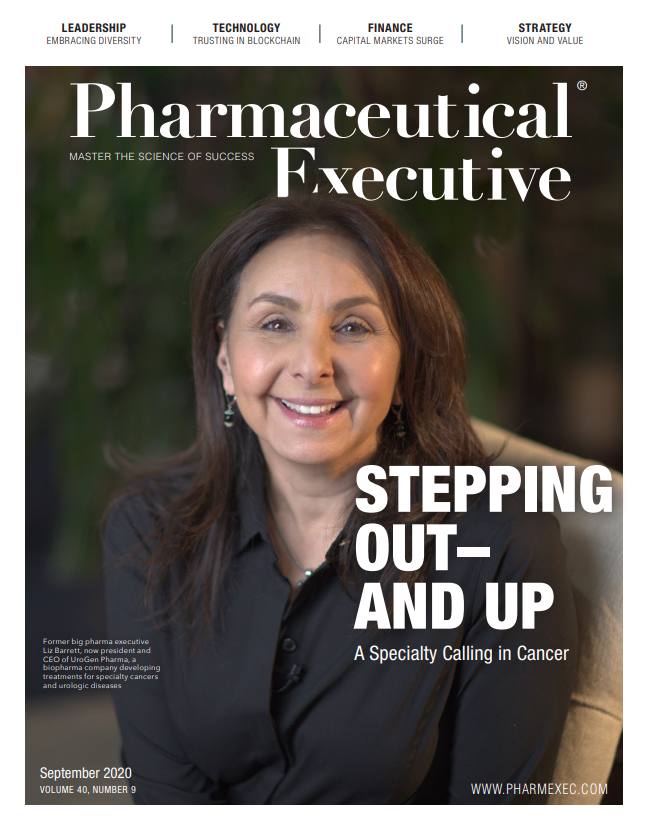Biopharma Capital Markets Sizzle in 2020
The key factors behind the sector’s strong surge in new equity fundraisings.

An unprecedented number of biotechnology equity offerings continue to be a main source of alpha for investors. In the first half of this year, biotech IPOs have raised $7.7 billion, 149% ahead of last year’s output during the same period.
Barbara Ryan

Impressively, about 90% of them were upsize, with an average increase in the number of shares issued of around 30%, and 85% of these deals priced at the high end or above the range. The average return for biotech IPOs year to date exceeds 80%. Since money truly does chase returns, it is not surprising that the sector has generated the largest levels of oversubscription. Not only are the valuations rising but the number of IPOs year to date is up 79%, to 129 initial public offerings.
Nineteen of the 41 IPOs in biotech in the first half of this year were oncology-focused. These deals raised $4.45 billion, with an average pre-money valuation of ~$700 million. The average offer-to-current share price is up 65%.
Follow-on issuance is up even more, at 185%, to $24.7 billion, which is a total of $32.4 billion injected into the space to potentially fuel innovations into the next decade. What are the reasons for such a steep increase?
The sector is innovating at an accelerated pace; many of these financings have followed quickly on the heels of the announcement of positive data.
FDA has already approved 38 new drugs; the agency cleared a total of 48 for the full year 2019.
Vaccines and therapeutics are critical to ending the COVID-19 pandemic and reopening the economy.
The cost of capital has probably never been lower for the sector, which will allow many companies to accelerate and expand their pipeline development and scale their operations.
Not surprisingly, against this backdrop, venture capital funding into US-based biopharma companies topped $6.4 billion in 2Q 2020, making it the largest quarter in the industry’s history. [For a wider look at biotech’s market performance in the first half of 2020, as well as pharma’s, see the story on page 38].
M&A contributes
In the first half of 2020, there have been over 125 product deals, and over 50 of these were related to COVID-19 therapies and vaccines. Investors continue to view the biopharma sector as key to reopening the economy. Development activities for vaccines and therapeutics are being accelerated. FDA Commissioner Stephen Hahn recently said his agency was prepared to approve a vaccine as soon as possible, and before Phase III trials were complete, as long as officials believed the benefits outweighed the risk. FDA might also choose to award an emergency use authorization for certain groups rather than a full approval of a vaccine before Phase III trials are complete.
Large cap pharma companies have $500 billion in cash, which they may choose to deploy, suggesting M&A could accelerate. Over $10 billion has been invested in new partnerships, which suggests that we will see more M&A announcements in the second half of the year. Most of the M&A’s unveiled this year were initiated through partnerships.
Median premiums paid year to date in 2020 in M&A transactions reached about 130%, a number that exceeds every year since 2011. This is even more impressive when you consider that the NBI index is up 329% over that period.
Storm clouds on horizon?
While the sector is surging now, will it last?
Despite the red-hot capital markets and swell of capital rushing into the sector, 10% of biotech companies are expected to run out of cash by the end of 2020. Companies with less than 24 months of cash are trading at ~50% of their 52-week high and are down about 20% since the start of the year.
Equity raises for these companies could be punitively dilutive. And organizations may have to seek alternate sources of financing such as partnerships, structured financings, and royalty arrangements.
In many ways, we are hoping that the second half of 2020 is better than the first (COVID-19, the economy, racial unrest), but we would be happy to see more of the same for biopharma.
Barbara Ryan is Founder, Barbara Ryan Advisors, and a member of Pharm Exec’s Editorial Advisory Board

The Misinformation Maze: Navigating Public Health in the Digital Age
March 11th 2025Jennifer Butler, chief commercial officer of Pleio, discusses misinformation's threat to public health, where patients are turning for trustworthy health information, the industry's pivot to peer-to-patient strategies to educate patients, and more.
Navigating Distrust: Pharma in the Age of Social Media
February 18th 2025Ian Baer, Founder and CEO of Sooth, discusses how the growing distrust in social media will impact industry marketing strategies and the relationships between pharmaceutical companies and the patients they aim to serve. He also explains dark social, how to combat misinformation, closing the trust gap, and more.